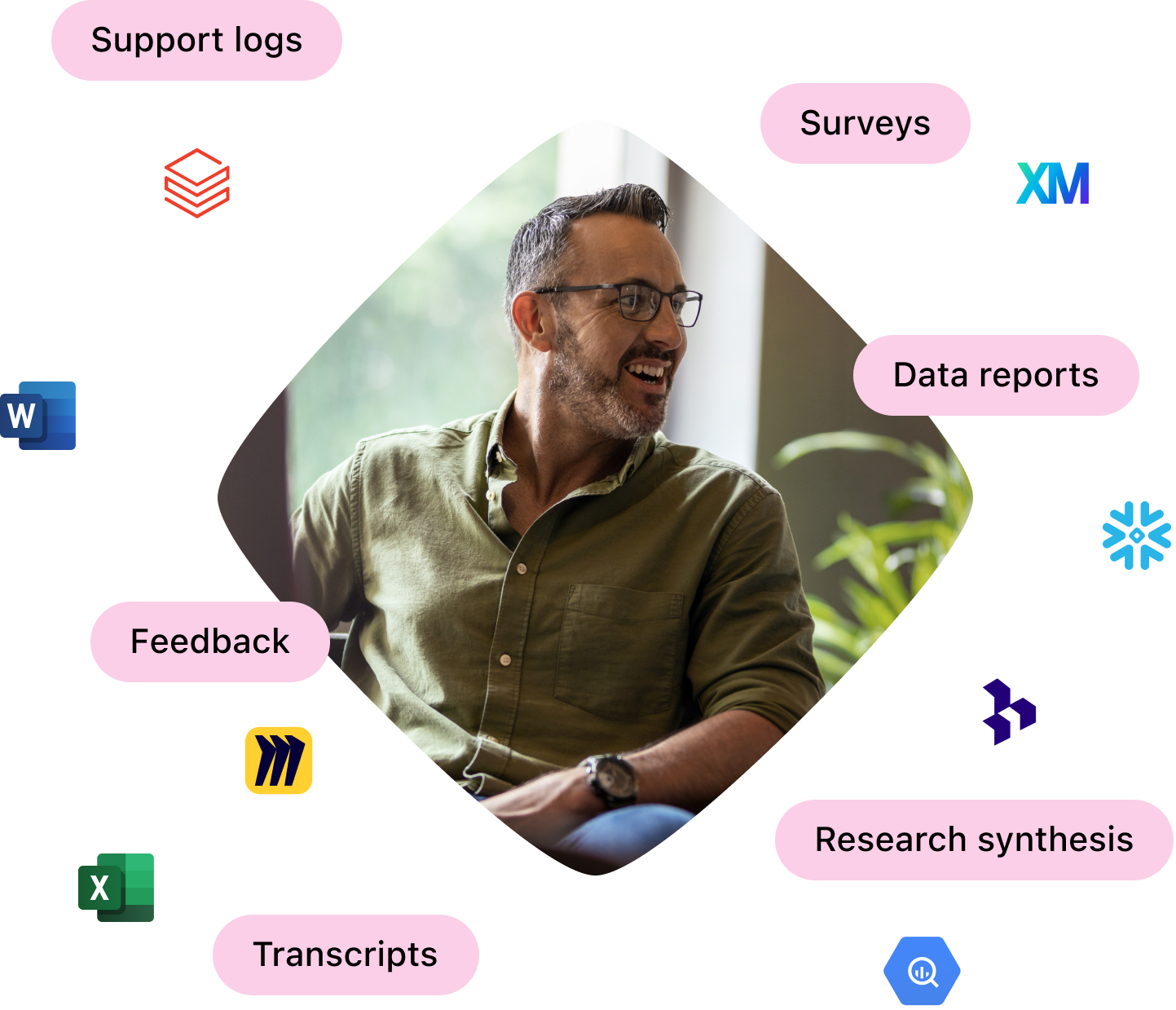Upcoming webinar: Delivering ROI-based journey management for the enterprise | Dec 17
Experience taxonomy:
Structure that unlocks
AI-powered CX
Most CX tools collect data. Some even visualize it. But without structure, that data stays disconnected. Disconnected from journeys. From teams. From business outcomes.
)
TheyDo’s experience taxonomy creates the connective tissue that turns scattered feedback into systematized, AI-readable insight. It gives your organization a shared model for understanding what customers are doing, what they’re trying to achieve, and what to do about it.
It is the foundation that powers Journey AI and drives everything from mining new insights to managing real-time decisions.
)
Build a shared language for every customer experience
The taxonomy sits at the heart of TheyDo’s Experience Intelligence Platform. It organizes everything — people, data, and decisions — around what the customer is trying to do. Every insight fits into this model, giving teams shared context and giving AI the structure it needs to find what matters most.
Journeys
Represent complete customer goals, such as “Buy a car” or “Submit a claim.”
Stages
Mark progress milestones and define key transitions within the journey.
Steps
Capture specific tasks, interactions, or decisions that customers take along the way.
Signals
Include feedback, transcripts, metrics, and support tickets, all mapped to relevant steps.
Opportunities
Emerge when patterns in signals reveal gaps, friction, or bright spots to act on.
)
Connect past and present with an evolving insight library
TheyDo doesn’t just surface new insights. It connects them to what you already know.
As Journey AI mines feedback and behavioral signals, new findings are added directly into your Insight Library and linked to the right journey steps. You can see what is new, what is trending, and what has already been addressed.
This is how TheyDo turns feedback into a living system, not just a snapshot.
Move from data to decisions with structure as your foundation
Without structure, AI is just pattern recognition. With TheyDo’s experience taxonomy, it becomes true decision support. Insights are no longer isolated. They are connected to journeys, ready for action, and measurable over time. Here’s what that looks like in practice:
Bring together feedback, tickets, interviews, and metrics in one shared model structured by journeys.
Link every data point to customer goals, stages, and steps so insight never floats without purpose.
Score each opportunity based on impact, urgency, effort, and alignment to business goals.
Monitor how issues evolve, see where improvements are working, and spot new risks early.
)
Scale alignment across teams and time
The taxonomy doesn’t just improve how AI works. It gives every team a common structure to act faster, stay aligned, and deliver real impact together. With TheyDo, everyone works from the same structure. That is how customer-centricity becomes a company-wide capability.
Designers
Represent complete customer goals, such as “Buy a car” or “Submit a claim.”
Product teams
Mark progress milestones and define key transitions within the journey.
Support and operations
Capture specific tasks, interactions, or decisions that customers take along the way.
CX leaders
Include feedback, transcripts, metrics, and support tickets, all mapped to relevant steps.
Executives
Get a unified view of where experience drives performance, with the ability to track results over time.
A future-ready structure for customer obsession
In the next generation of customer experience, nothing happens without context. TheyDo’s experience taxonomy gives your teams and your AI models the same structured foundation.
It powers Journey AI. It keeps your Insight Library evolving. It ensures that every signal becomes part of a bigger picture so you can see what is happening, understand why, and act with confidence.
If your organization wants to scale customer-centricity, this is where it starts.
